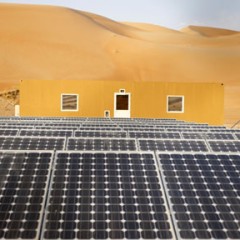Documentation
After your Purchase:
After your purchase, unzip the file you will download and upload the file valencia.zip through your wordpress admin panel.
To upload the Theme
- Go to Appearance -> Themes
- Choose Install Themes tab
- Choose Upload mini-tab
- Choose the file and upload it, then click activate.
Or you can see the WordPress installation details here.
After Installing AlYoum, we recommend to install the demo data and make it the start point for your work.
- Import the file demo.xml in Tools->Import
- Import the sidebars by loading widget_data.json in Tools->Widgets Settings Import
- Assign the Main Menu in Appearance->Menu
- In Appearance->Import/Export Options get the options code from option.txt and paste it there and click Import
- In Appearance->Theme Options Assign The Homepage and footer from the imported templates. “If it is not assigned”
- By that you will have the demo installed.
Check list
- Add the Logo, favicon and adjust the main elements in the Theme Options
- Create the Main Menu and footer menu and assign them
- Add the widgets to your sidebars
- Create your Homepage and assign it.
- Create the rest pf the pages.
After installation you should see the Slides Menus added to your menu.
You can reach the Theme Options by:
In Dashboard, Click on Appearance -> Theme Options to see the main options for your theme
From the Top bar from any page in your website
On the General Settings
- Set the Logo
- Set the favicon
- Choose the homepage
- Choose if the website is RTL
- Enable the preview Mode to test some colors in your website.
- Add the email will be used in the contact us page
- Add Google Analytics Code
- Add Custom CSS Code if you want
- Add Custom Javascript Code if you want
Click Save Changes
In this Section, you can edit the colors and fonts of the theme.
- Set the Primary Color, Default #d64a2b
- Upload the Background and adjust it’s settings.
- Choose the Primary Font “Default: Oswald”.
- Choose the Body Font “Default: Open Sans”.
Click Save Changes
In this Section, you can edit Social Accounts of your website.
- In the Theme Options Page, Go to Social
- Add the social media links
- Note That if you dont want to display any of these leave it’s area blank
About Facebook App and Facebook Thumb
This to relate all facebook activities to your facebook App and the image will be used when not thumbnail available when sharing on facebook.
Click Save Changes
In this Section, you can edit The Menus for your website.
To Create a Menu:
- Go to Appearance->Menu.
- Create your menu and assign it.
Icons in Menu
To Enable The Icons, Press on the Screen Options on the top of the page and enable css-classes, and add the class for any icon in this field.
You can access all the icons available Here
In this Section, you can edit The Sidebars for your website.
Tasty comes with 6 Ready Sidebars:
- Default Sidebar: This Shows in the Search, Author or Categories Pages & Default Left Sidebar
- Post Sidebar: This Shows by default in all the Articles. & Post Left Sidebar
- Page Sidebars: This Shows by default in all Pages. & Page Left Sidebar
To Create a new Sidebar:
- Go to Theme Options Page, Then Sidebars tab
- Click Add New, then Enter the Title and Slug and Description.
- Click Save Changes.
- Go to Appearance -> Widgets and you will find the new Sidebar there.
To Assign Sidebar:
- Go to Page/post Edit Page.
- You will find A Box Called General Settings below the content Area.
- Choose the Layout to be Right or Left.
- Choose your customised Sidebar for this Page/Post
- Click Update
In this Section, you will learn about the slider in your website.
Alyoum comes with Ready Slides Custom Type.
Creating A Slide
- In the Left menu in the dashboard you will find Slides Menu.
- Click Add Slide.
- Below the content Area you will find Box Called Slider Settings
- Choose the Type and edit the data then Click Publish.
Slides Type
1- Use Featured Image as a background and the title and content as the box
- Image: Upload it in the Featured Image Area
- Title: Add it As the slide title.
- Content: Add it in the Content
- Button: Add the text and link in the side box.
- Box Position: Choose the Box Position you want
2- Use video fields as the source for the slide
- Video: at the bottom of the Slide Settings Area, Choose the type of the video
- Add the video ID.
- Options Available for Videos: Youtube, Vimeo and Dailymotion.
3- Get the slide content from a post, Choose it from the dropdown below
- Choose the Post from the Slide Settings Area.
- Image: Will Fetch the Post Featured Image Automatically.
- Title: Will Fetch the Post Title Automatically.
- Content: Will Fetch the Post Excerpt Automatically
- Box Position: Choose the Box Position you want
Creating the slider it self.
- In the Edit Page you will find a Box called Slider Settings.
- Turn the Show Slider Dropdop to Yes.
- Then Click Add New.
- Choose the Slide from the drop down.
- Add the slides you want and rearrange them as you like.
- Click Publish or update.
In this Section, you will learn about Shortcodes available in your website and its generator.
AlYoum comes with 90+ Shortcodes, All fo them Available in the shortcodes Generator.
Using the Shortcodes Generator
In Any Edit Page you can find our little magic button, click it and the shortcodes generator pop up will appear.

You will find the pop with dropdown menu of all the available shortcodes, choose any ro display it’s settings

Add it’s parameters and Click Generate.
In this Section, you will learn about the layout Builder in your theme.
In ANY Page Edit you will find section called: layout Builder.
- First, Turn the Dropdown to Yes to enable the Layout Builder for this Page
- Click Add New
- Choose one of the templates you created
- Click Update page.
Create a template
- Go to Appearance->Page Builder
- Add the template name and Click Create template.
- You will find the available shortcodes as blocks and categorizad by its usage “to make it easier to find your shortcode”
- Below the blocks you will find the layout blocks, first you will build your layout then add the shortcodes block to it
- Build your layout and click Save Template.
That’s it ![]()
In this Section, you will learn about Assigning your Homepage.
- In Theme Options -> General Settings.
- You will find HomePage Option.
- Choose the Page you want to display as your Homepage.
- Click Save Changes.
Note: You will have the exact copy of the page selected in homepage.
That’s it ![]()
AlYoum Theme is Retina Display Ready, All the images in the theme is icons and fits any retina display, to achieve 100% Retina you need to install WP Retina 2X
In this Section, you will learn about Creating your Footer.
- In Theme Options -> Footer Settings.
- Using the Layout Builder Method, Create a template with your footer layout
- Choose it from the available templates
Click Save Changes
In this Section, you will learn about Translating your website.
To translate your website, use the files located in library/languages/defauklt.po and open it using POEdit and translate the theme strings to your local language, I only supports now the Arabic translation as it is my native language, any help to translate the website will be appreciated.
After that save it and upload them to library/languages/, for example you saved it as fr_FR.po, a new file will be also created fr_FR.mo, You must upload both of them to the folder
Now open your WordPress site root and open wp-config.php and make sure that WP_LANG is like this
define('WPLANG', 'fr_FR');
If your website language is supported via RTL, you should enable the rtl from the Theme Options Page.
That’s it, your website is ready for your local language.
Note: You can use PoEdit program to edit the po file.

















